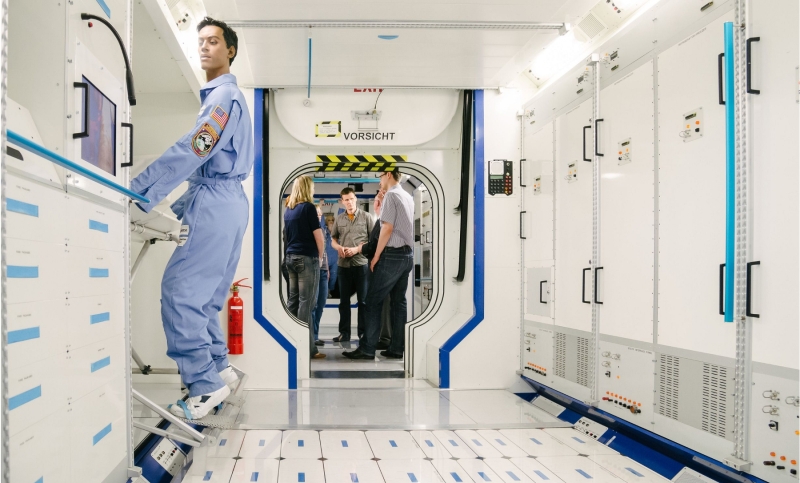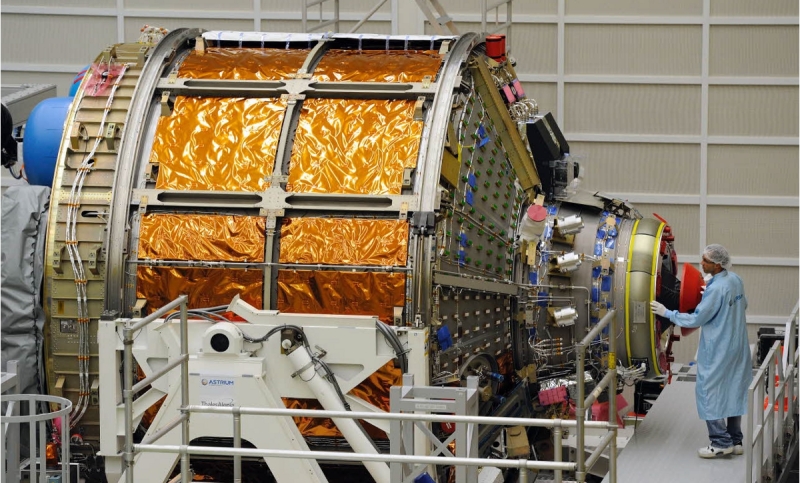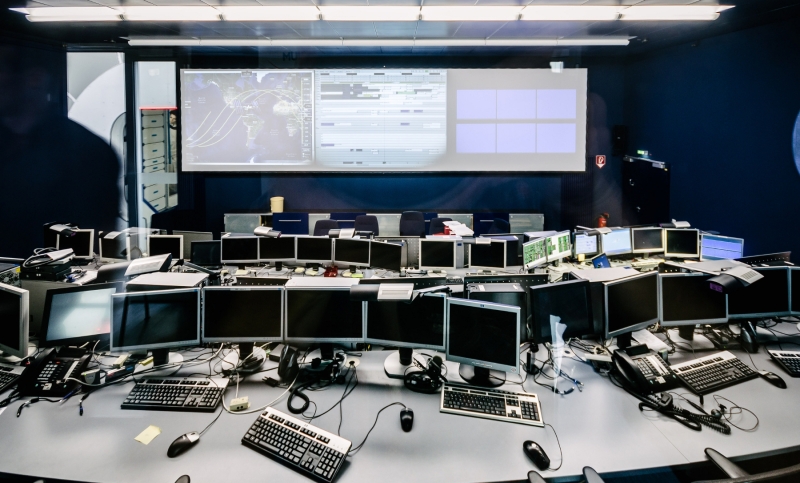To boldly go, and safely return – behind the scenes at Ariane Group
AerospaceSpace travel made in Bremen

What man and machines are achieving in space is truly impressive. At the launch sites and at home, millions of spectators watch rockets blasting off into the great unknown. But few outsiders get the chance to see what makes all this successful space travel possible. At Bremen Airport-City, rocket engineers work on projects such as the Ariane 5 launch vehicle. We watched experts from the Ariane Group at work.
When it comes to engineering, the aerospace sector is in a league of its own. On a tour of the Ariane Group facility in Bremen we witnessed this for ourselves.
Bremen is the European centre of excellence for manned spaceflight, space robotics and launch vehicles. Here, around 1,000 people are making a significant contribution to global aerospace projects such as the International Space Station, the Columbus laboratory module, the unmanned ATV cargo spacecraft and the Ariane 5 launch vehicle, which provides Europe with independent access to outer space.
Ariane 5’s upper stage comes from Bremen
The Ariane Group currently manufactures the complete upper stage of the Ariane 5 in Bremen. Together with the VEB (Vehicle Equipment Bay), which represents the ‘brains’ of the rocket, the upper stage forms the rocket’s upper composite. It is fuelled by high-energy liquid hydrogen/liquid oxygen. By August 2016, Airbus Group had achieved 72 consecutive successful launches of the Ariane 5. A fully integrated upper stage leaves the integration hall in Bremen up to eight times a year.
The integration of the upper composite takes place in a clean room with a strict limit on the number of dust particles in the air – in this particular case 100,000 per cubic metre. During integration, even the presence of foreign bodies that are only a fraction of a millimetre in size could have disastrous consequences. As it’s not possible to stage test flights before the actual launch of the rocket to ensure that everything is working correctly, the cleanliness of the integration room is very important, along with endless testing. The Ariane launch vehicles take off from the European spaceport at Kourou in French Guiana.

On the floor above, we looked at models of the automated transfer vehicle (ATV) and the International Space Station (ISS). From 2008 to 2015 the ATV supplied the ISS with fuel, oxygen, food, water, spare parts and new equipment. The size of a London double-decker bus, the unmanned cargo craft used to dock with the ISS, which is about the size of a football pitch, at a speed of 28,000 km/h. The ATV was built, integrated and tested in Bremen.
Emergency control centre in Bremen
We continue along the ‘planetary way’, where a simulation demonstrates gravity on the different planets by means of trays carrying equal loads. Opposite the entrance to the Columbus module we get to see inside the simulation and diagnosis room, where engineers keep in contact with the ISS. The actual Columbus control centre is near Munich, but the engineers in Bremen receive all of the Columbus data around the clock and can intervene at any time if they detect signs of an anomaly.
On the control room monitors we immediately spotted the rota of the astronaut crew on board the ISS. This gives a minute-by-minute breakdown of their daily routines.
Science in space – the Columbus module from Bremen
The European Space Agency’s (ESA) Columbus space laboratory has its roots in Bremen. The module was developed and built here by Airbus Defence and Space, before being taken to the ISS on board the Atlantis space shuttle in 2008. There it remains an integral component of the space station – and a masterpiece of engineering. The space laboratory is designed for conducting experiments in zero gravity. The life-size replica of the Columbus module shows the different research facilities, such as the Biolab, where experiments with cells, tissue cultures, microorganisms, small plants and invertebrates are carried out. The Fluid Science Laboratory (FSL) is used to analyse fluid dynamics and other phenomena exhibited by liquids.

We started to feel a bit peculiar as we entered the module – a sure sign of claustrophobia. Now we know just how cramped conditions are on the ISS, and how well organised the work there needs to be. Everything has its place inside the space station, thanks to an ingenious system of flaps and drawers, research paraphernalia and racks, along with fixing points and handles. In zero gravity there is no such thing as ‘up’ or ‘down’.
Not everyone gets to be an astronaut
Those who work here have gone through some tough training. As the ISS zooms over our heads at an almost unimaginable 28,000 kilometres an hour, around 400 kilometres above the ground and orbiting the earth once every 90 minutes, it is manned by up to six astronauts at a time. The first step towards becoming an astronaut is one year of basic training. This is followed by a year of advanced training in which candidates must continuously prove themselves in tests and exercises in order to have a chance of qualifying for a trip to space. This can take several years. In 2008, more than 8,400 aspiring astronauts from all across Europe applied, but only six of them made the final cut.
As our tour of the sacred halls of the Ariane Group came to an end, we encountered a remnant from the 1980s at the exit of the Columbus module: Spacelab, the ‘father of Columbus’, as it is affectionately known to the employees here. After 22 missions into space, it now stands as a part of space history in the Spacelab hall in Bremen.
More information on the Ariane Group is available at www.ariane.group/de, the contact for the space sector at Bremeninvest is Dr Barbara Cembella, tel: +49 (0)421 9600-340, barbara.cembella@aviaspace-bremen.de.
Success Stories
The history of space travel in Bremen
Small circle, big impact: With the founding of the “Development Ring North” (ERNO) in July 1961, Bremen began its development into one of the world’s leading spaceflight locations. Even the return of humans to the Moon would hardly be possible without technology from the Hanseatic city.
Learn moreHow a space enthusiast campaigns for women in STEM fiels and Bremen as a space location
How does someone from a small village in Poland end up working on human spaceflight in Bremen? Dr. Anna Chrobry shares her journey through science, passion, and perseverance—and explains why she proudly calls herself a "space girl."
Learn moreVisions for the future of aerospace
From car navigation systems to weather reports - hardly anything works without satellites. They need fuel, but this is often toxic. The Institute of Aerospace Technology at Bremen University of Applied Sciences is researching environmentally friendly alternatives. What the future of space travel could look like.
Learn more
